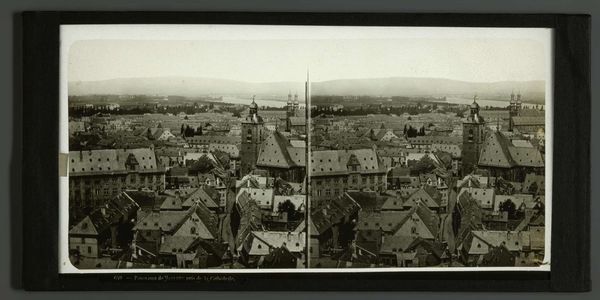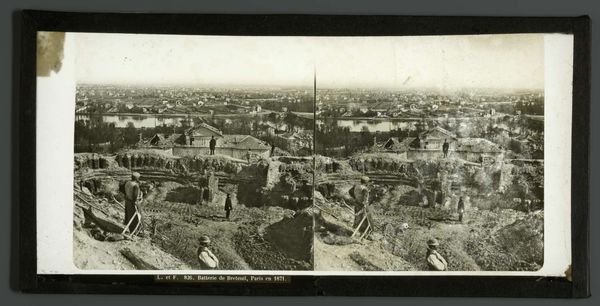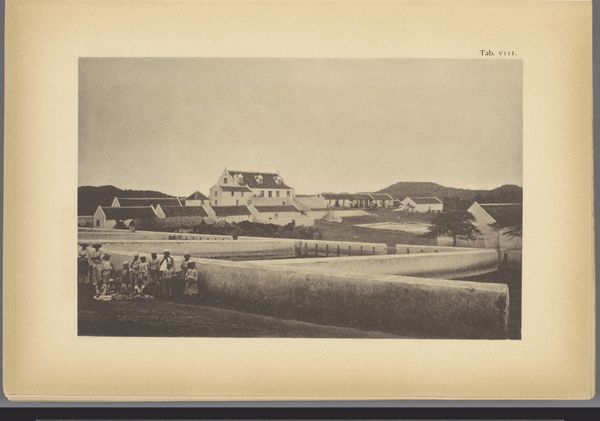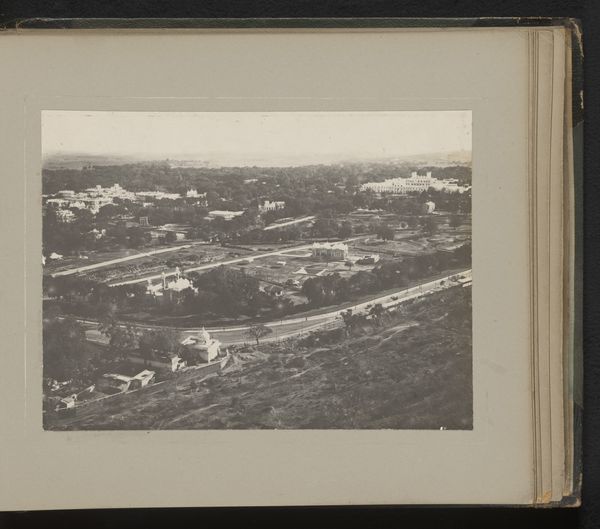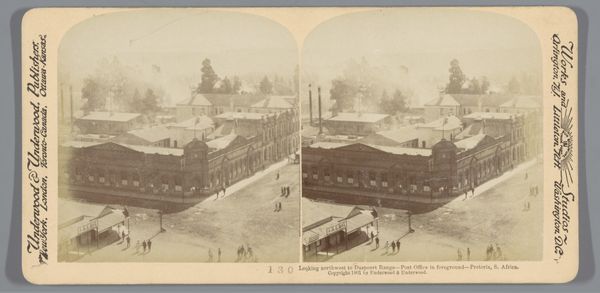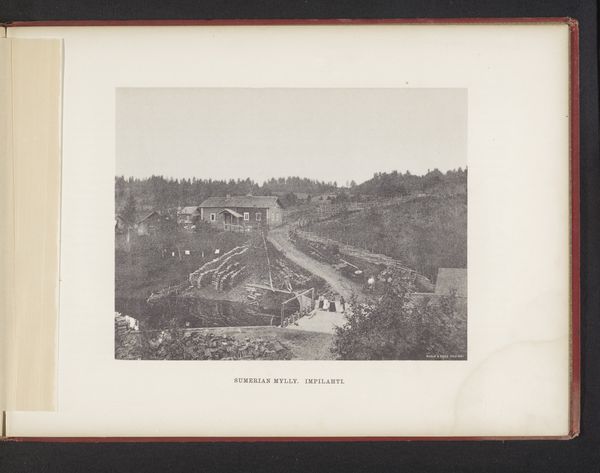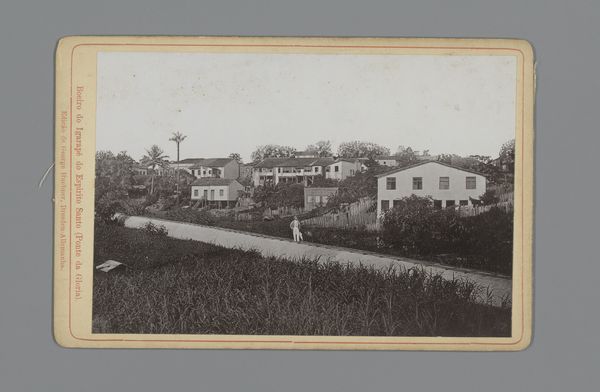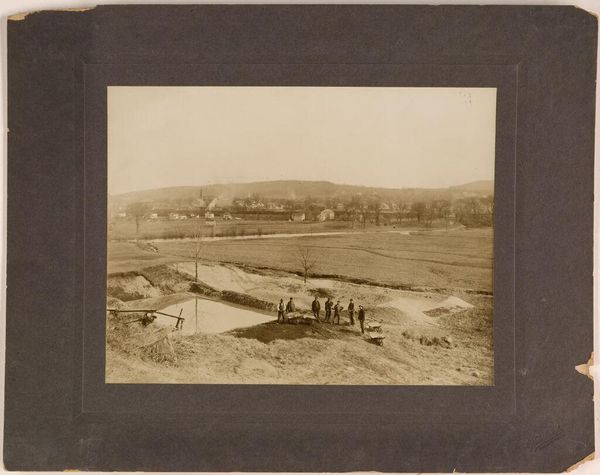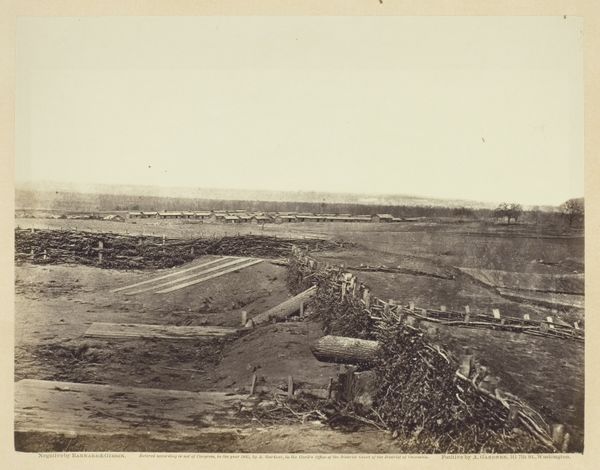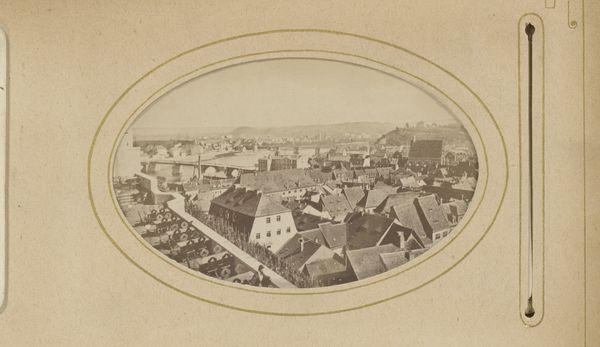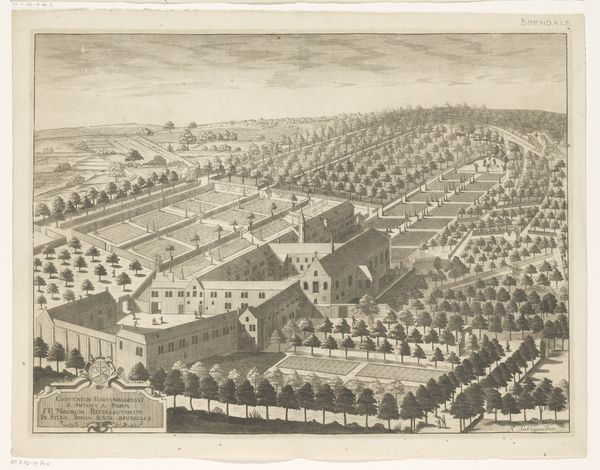
print, photography, gelatin-silver-print
#
muted colour palette
#
ink paper printed
# print
#
sculpture
#
asian-art
#
landscape
#
photography
#
framed image
#
orientalism
#
muted colour contrast
#
gelatin-silver-print
#
cityscape
Dimensions: height 82 mm, width 171 mm
Copyright: Rijks Museum: Open Domain
Editor: This is a photograph titled "Kamp te Semarang, Midden-Java," created between 1857 and 1864 by Woodbury & Page. It's a gelatin silver print, and it feels… almost dreamlike in its clarity and stillness, don't you think? What do you make of this depiction? Curator: The dreamlike quality, I think, stems from our distance from the scene, both temporally and culturally. But look closer at what endures – the built environment, the boats lining the canal. These are powerful symbols of a culture's attempt to impose order and meaning on the natural world. Do you notice anything in particular about the layout of the camp, or how space is being used? Editor: It's very orderly; everything seems planned out. The buildings all look similar, and there's a clear division between the built and natural spaces. Is that a reflection of the values of the people who lived there? Curator: Precisely! And values imposed from the outside as well. Consider the gaze of the photographer – an outsider looking in. This image speaks to the visual language of colonialism, documenting, cataloging, controlling. How do you think the perspective of the photographer affects how we interpret what we're seeing here? Editor: It’s interesting how a photograph, which feels so objective, can be shaped by a specific viewpoint, changing the narrative. I never really thought about it that way before. Curator: Indeed. And those layers of intention, memory, and history are embedded in every image we encounter, waiting to be uncovered. Recognizing these codes makes us more conscious viewers and ultimately enriches our understanding. Editor: I completely agree. This image has so much to say, I wonder what further reflection can reveal with time and research. Thanks for pointing out the cultural context here.
Comments
No comments
Be the first to comment and join the conversation on the ultimate creative platform.

